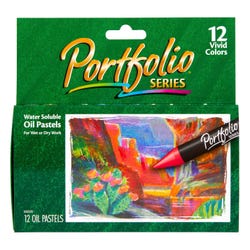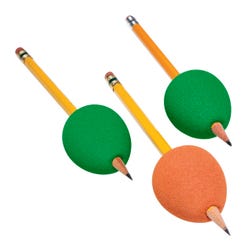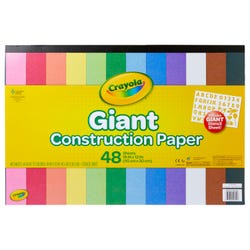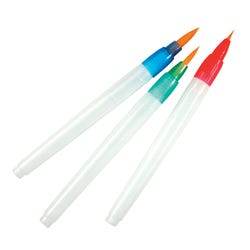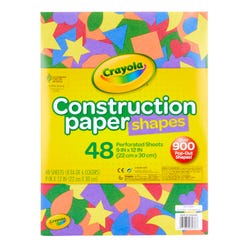My Night Sky

Description
Lesson Plan and Artwork by Sue Loesl
On a clear night, we can look up into the sky and see stars, planets, satellites, and constellations. Nebula are found in interstellar space which is too far away to see without a telescope. NASA ™ has sent interstellar spacecraft with giant telescopes to help us see the beautiful nebula beyond our planet Earth. These shimmering images in the sky encourage us to wonder about whether there are any other life forms out in space; on planets or maybe traveling in spacecraft seeking other life as well. By combining interest in the night sky and space travel, students will create images that foster their creativity in designing “My Night Sky”.
Objectives
- Learn about and explore various nebula images to design their own nebula images.
- Use basic shapes to create spacecraft.
- Create their own night sky composition that reflects their personal creativity.
- Support independent artmaking opportunities utilizing adapted art materials and tools.
Supplies Needed
Crayola® Signature™ Outline Paint Markers, Assorted Metallic Colors, Set of 6
Crayola® Signature™ Pearlescent Paint Markers, Assorted Colors, Set of 10
Crayola® Portfolio® Series Water Soluble Oil Pastels, Assorted Colors Set of 12
Crayola® Signature™ Pearlescent Cream Sticks, Assorted Colors, Set of 10
Crayola® Construction Paper Shapes, 9 x 12 in, Assorted Colors, Pack of 48
Crayola® Giant Construction Paper and Stencils, 18 x 12 in, Pack of 48
Crayola® Heavy Weight Watercolor Pad, 16 x 12 in, 25 Sheets
Crayola® Construction Paper Pad, 9 x 12 in, Assorted Colors, 96 Sheets
Elmer’s® Washable School Glue Stick, 0.77 oz, Disappearing Purple
PETA Mini Easi-Grip Scissors, Stainless Steel Blade, Maroon/Red
Royal® Aqua-Flo Nylon Hair Watercolor Paint Brush Set, Assorted Size, Set of 3
Abilitations® Egg Ohs Handwriting Grips, Set of 3
Standards
Standard #2: Organize and develop artistic ideas and work.
Standard #6: Convey meaning through the presentation of artistic work.
Standard #7: Perceive and analyze artistic work.
Standard #10: Synthesize and relate knowledge and personal experiences to make art.
Instructions
1
Research space nebula and explore images of nebula from sources such as the Hubble Telescope™ from NASA™ with students. A great resource for accessing nebula images for students with disabilities is NASA™ Touch the Universe by Noreen Grice, 2002. This book has braille and large captions, as well as textures in bumps and lines to enhance the learning experience of nebula for any student.
2
Create nebula background: Have students use the white Crayola Signature Pearlescent Cream Sticks or Crayola Portfolio Series Water Soluble Oil Pastels on black or blue 9x12 Crayola Construction Paper, creating a light outline for their nebulae and base color. (Coloring in the nebula shape provides a lighter base for the colors to shine on, while allowing the depth of the dark paper underneath). After white base outline is completed and then lightly filled in, have students choose other Crayola Pearlescent Cream Stick colors to add over the white to create their nebula. Students can also use the Crayola Portfolio Series Water Soluble Oil Pastels for more intense colors. The pearlescent colors will blend well with the oil pastels when mixed with water. If needed, tape the construction paper to the work surface with painters tape or masking tape to keep the paper stable for drawing and painting.
3
Direct students to use the Aqua Flo Watercolor Paint Brush filled with water to blend the pearlescent and oil pastel colors into the nebula and to extend shimmer into the black or blue background construction paper. If the students want more intense color, they can reapply the cream sticks with or without water to get their desired effects.
4
To add details to the nebula, students can use Crayola Signature Metallic Outline Markers, Crayola Signature Pearlescent Paint Markers, or Crayola Portfolio Series Water Soluble Oil Pastels. Each of the materials will provide a different effect that will enhance the shimmer and subtle details of the nebula. Let the nebula image dry.
5
Research and prepare images for students of various space craft that are real and imaginary. Focus on various basic art shapes that can be combined to create the spacecraft. Demonstrate for students the kinds of lines that create the illusion of motion to support the look of the space craft flying in space. Have students practice drawing various motion lines behind basic shapes on scrap paper with a pencil. If the students require a grip to better hold the pencil, Abilitations Egg Oh’s Handwriting Grips can be attached to the pencil.
6
Demonstrate how to remove the perforated Crayola Construction Paper Shapes from the various colored papers. Some students may need to have the shapes pre-removed from the sheets to reduce torn shapes. When shapes are all prepared, demonstrate with students how to manipulate the various shapes to create spacecraft and other sky imagery such as stars, planets and constellations on their nebula backgrounds. When students have pleasing designs, have them use a washable glue stick to glue the spacecraft shapes together and then glue these and other night sky elements such as stars onto the nebula background.
7
For additional opportunities to create spacecraft and night sky elements, students can use the white Crayola Easel Pad Heavyweight Watercolor Pad or Crayola Construction Paper. To cut the papers, students can use PETA Mini Easi-Grip Scissors. These are a small loop scissors that work well for all students for details as well as larger images.
8
Once the spacecraft is added to the nebula, the students can enhance the images with any of pearlescent, metallic or oil pastel media, as well as add other details to the nebula such as stars, planets, constellations, etc.
9
Students can determine when the art piece is complete.



